PLATE LOAD TEST
FOR
DETERMINING THE IN-SITU
SAFE BEARING CAPACITY OF SOIL
PROJECT NAME : ANALYSIS THE MAXIMUM LOAD CAPACITY WHICH THE ELEVATED PLATFORM/FLOORING OF EXISTING WAREHOUSE CAN CARRY SAFELY.
PROJECT LOCATION : XXXXXXXXXX, HAPUR, UTTAR PRADESH
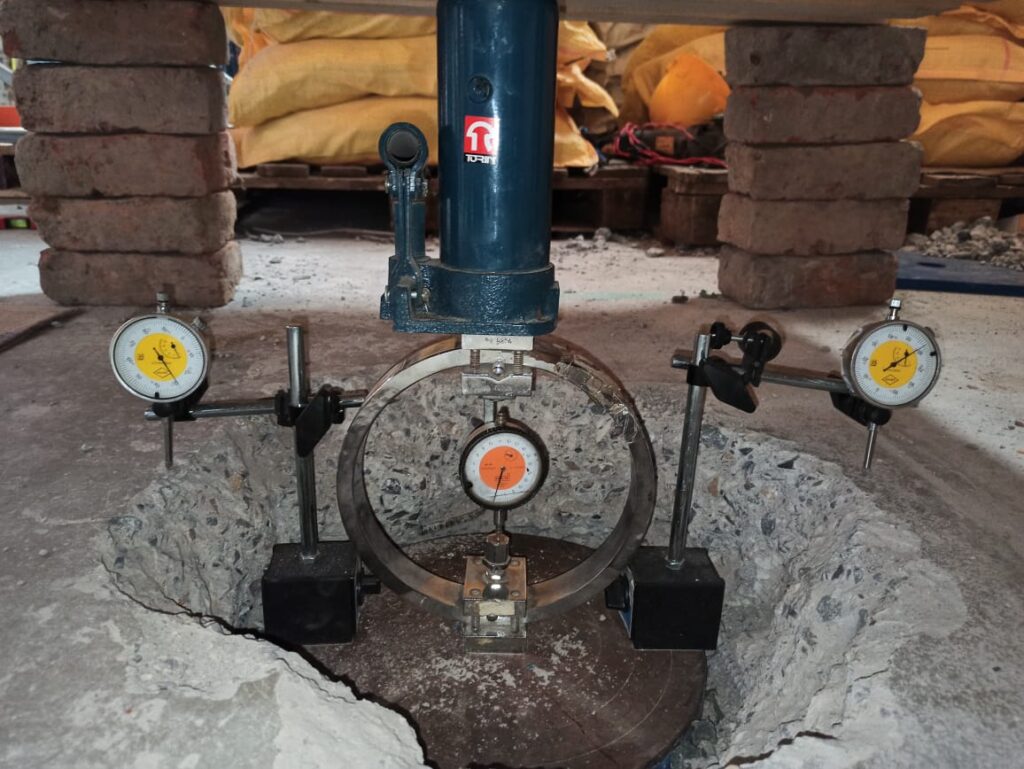
O.B Developers
(STRUCTURE AUDIT AGENCY)
F-14, Kalkaji Main Road
New Delhi-110019
MOB: +91-9717924616
structureauditagency@gmail.com
WWW.STRUCTUREAUDITAGENCY.COM
- INTRODUCTION
The structure is a located at Delhi-Meerut Highway. During the working operation the staff of the warehouse found that there is various uneven settlements was occurring the existing flooring. M/s O.B Developers (Structure Audit Agency) was requested to check the maximum load carrying capacity of the floor and in case the floor capacity is found less than 700Kg/sqm a methodology will be suggested to increase the floor load carrying capacity.
- What is Plate Load Test
The plate load test is a field test, which is performed to determine the ultimate bearing capacity of the soil and the probable settlement under a given load. This test is very popular for the selection and design of the shallow foundation.
For performing this test, the plate is placed at the desired depth, then the load is applied gradually and the settlement for each increment of the load is recorded. At one point a settlement occurs at a rapid rate, the total load up to that point is calculated and divided by the area of the plate to determine the ultimate bearing capacity of soil at that depth. The ultimate bearing capacity is then divided by a factor of safety (typically 2.5 to3) to determine the safe bearing capacity.
- Plate Load Test Apparatus
Following instruments are needed to complete and perform plate load test
- Test plate
- Hydraulic jack & pump
- Reaction beam or reaction truss
- Dial gauges
- Pressure gauge
- Loading columns
- Necessary equipment for the loading platform.
- Tripod, Plumb bob, spirit level, etc.
- Process of Plate Load Testing
1. 3.1 Doing RCC Scanning at the place where we need to conduct the plate load test so that during dismantling of existing floor the reinforcement bars does not get damaged
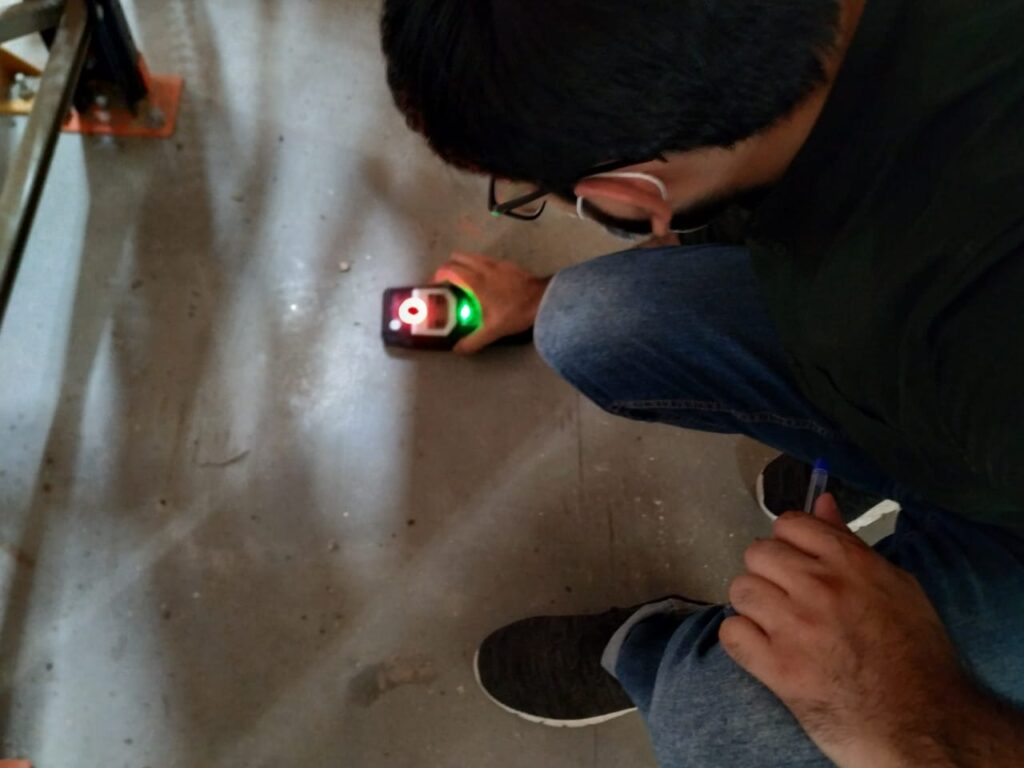
1.3.2 Once the RCC Scanning work is completed not the existing floor is dismantled using hydraulic breakers
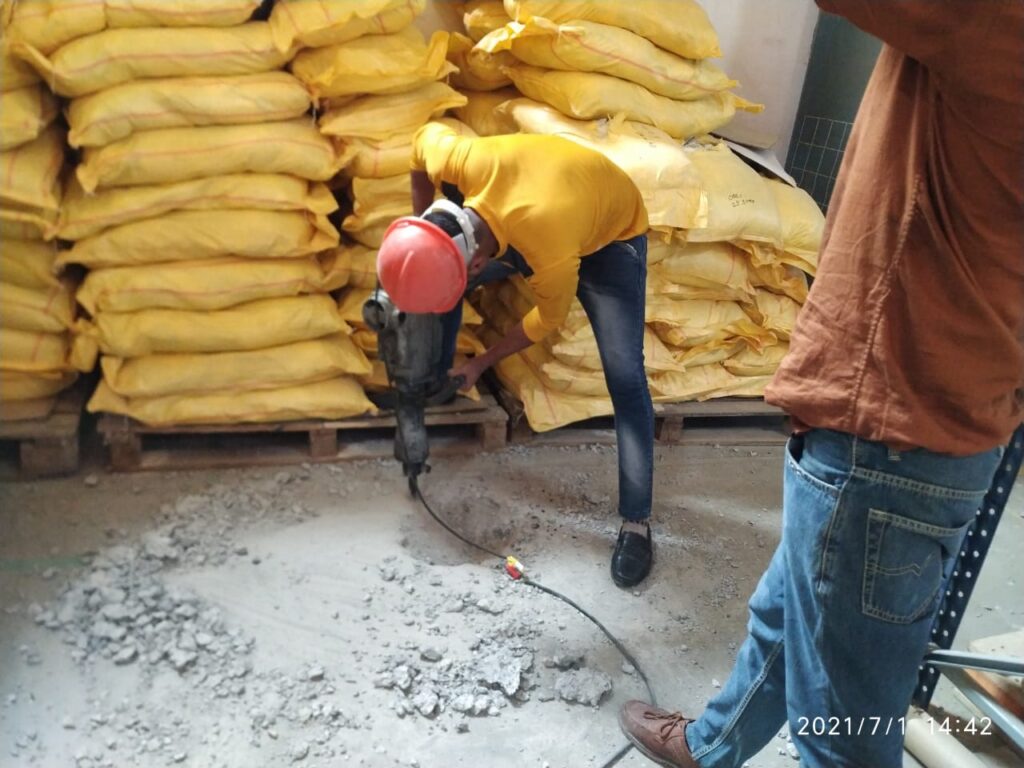
1.3.3 After removing the floor the plate 350mm diameter is placed on the surface and levelled correctly
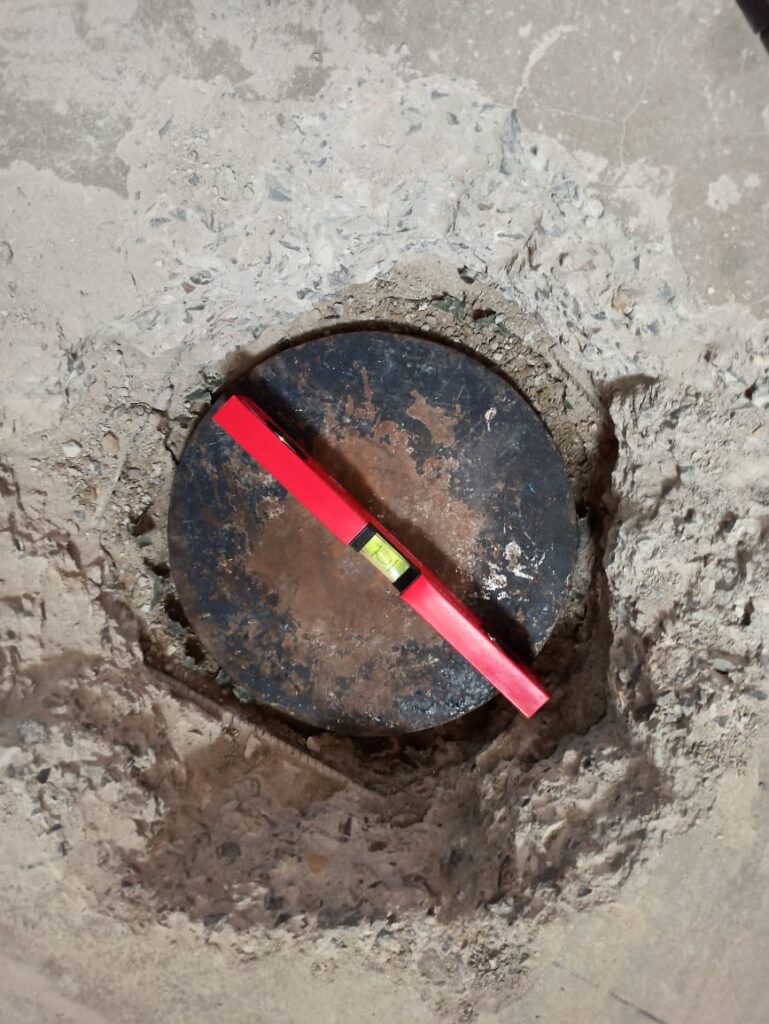
1.3.4 Once the plate is placed and level now the dial gauges are fixed on desirable placed using magnetic stand, Dial gauge need to be placed in such a way so that their initial reading should be more than 2mm.
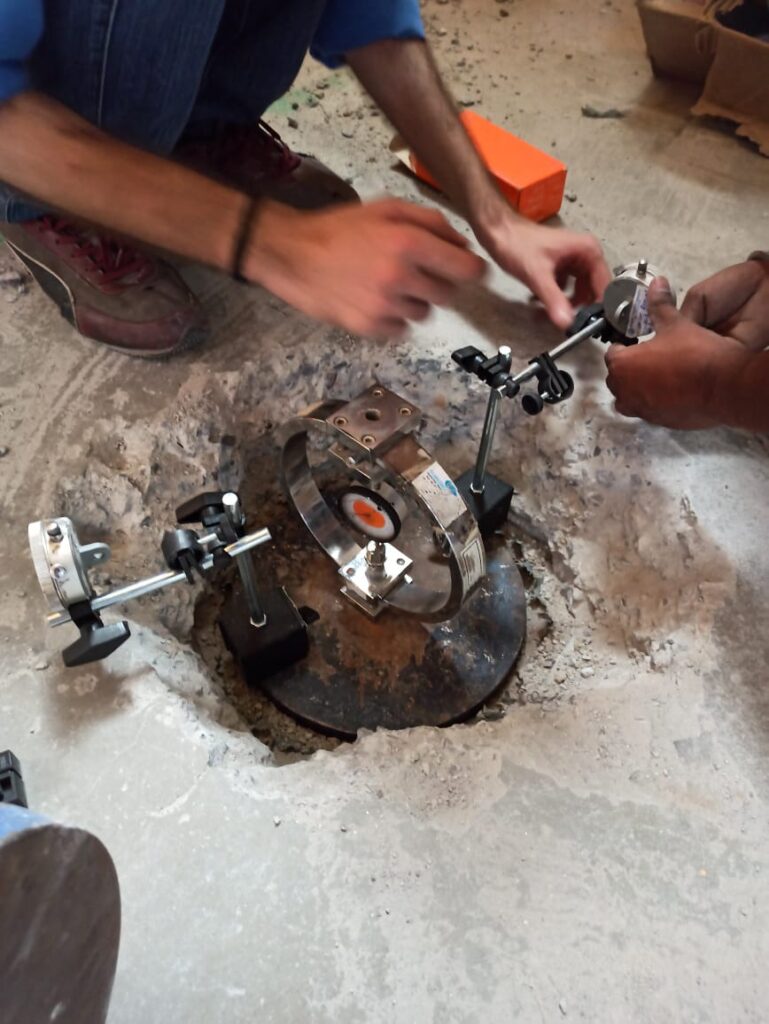
1.3.5 Once the dial gauge are placed in position loading arrangement and the hydraulic jacks need to be placed for applying the pressure on the place.
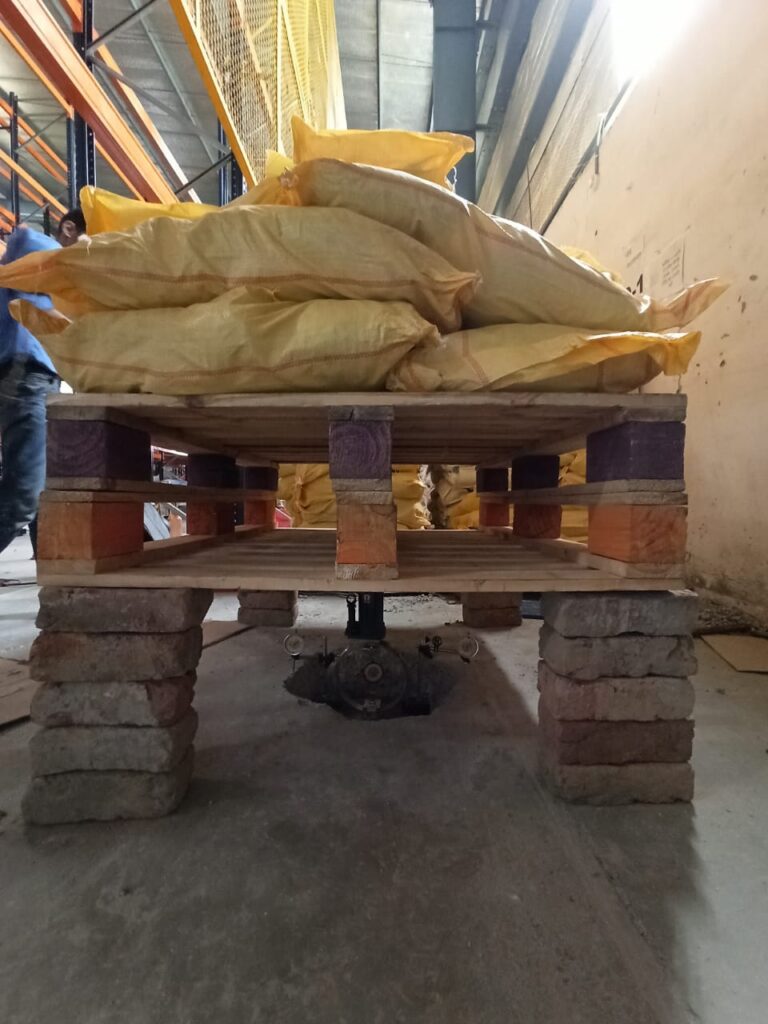
1.3.6 Reading in variation of dial gauge corresponding to the increment in load will be noted correctly.
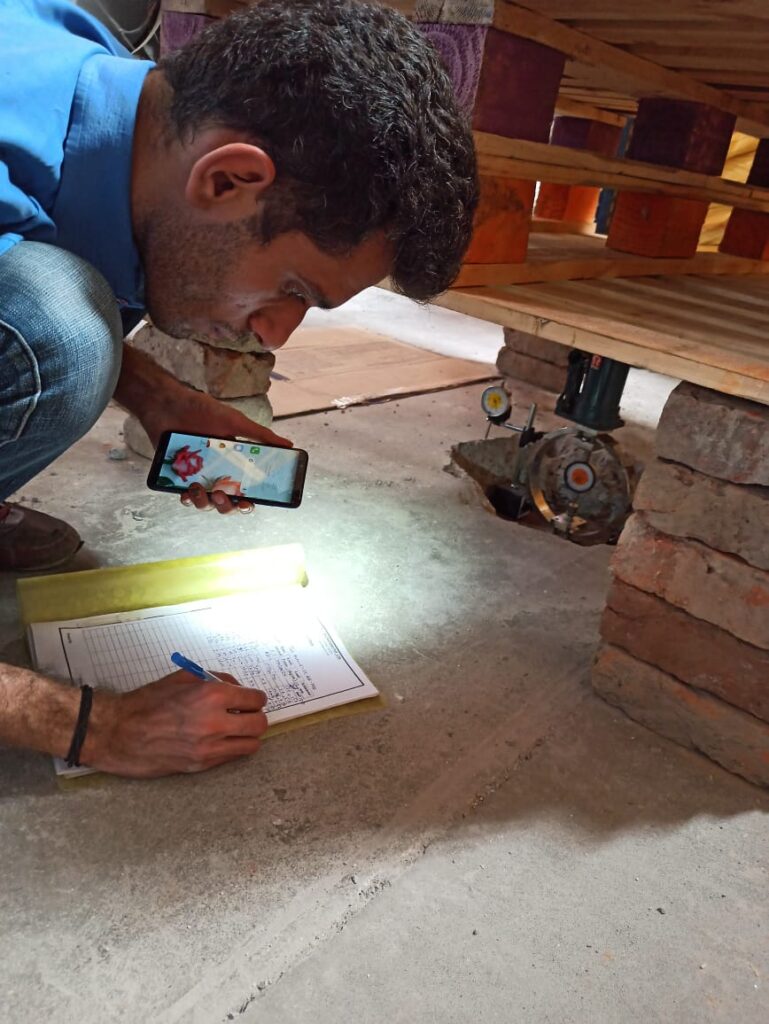
- Calculations of Soil Bearing Capacity from Plate Load Test
After the collection of field data, the load-settlement curve is drawn. It is a logarithmic graph where the load applied is plotted on X-axis and settlement on Y-axis. From the graph, the ultimate load for the plate is obtained which is the corresponding load for settlement of one-fifth of the plate width.

When the points are plotted on the graph, the curve is broken at one point. The corresponding load to that breakpoint is considered to be the ultimate load on the plate. The ultimate bearing capacity can be calculated from the ultimate load from the plate. The ultimate bearing capacity is then divided by a suitable factor of safety to determine the safe bearing capacity of soil from the foundation.
- General Equations for Calculation of Bearing Capacity of Soil
Soil Bearing Capacity Calculation for Clayey Soil
Following is the equation to determine soil bearing capacity for clay from the plate load test.
Ultimate Bearing Capacity = Ultimate Load for the Plate.
Soil Bearing Capacity Calculation for Sandy Soil
The followings are the equation to determine soil bearing capacity for sand from the plate load test.

Typically, the range for the factor of safety varies from 2 to 3.


Leave a Reply